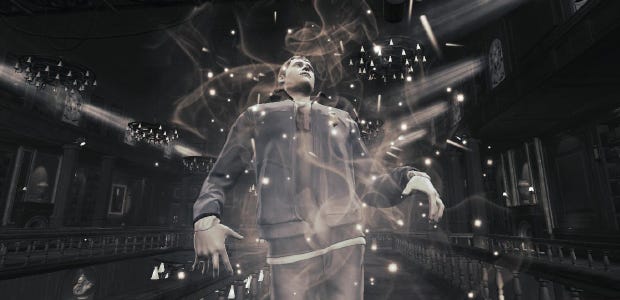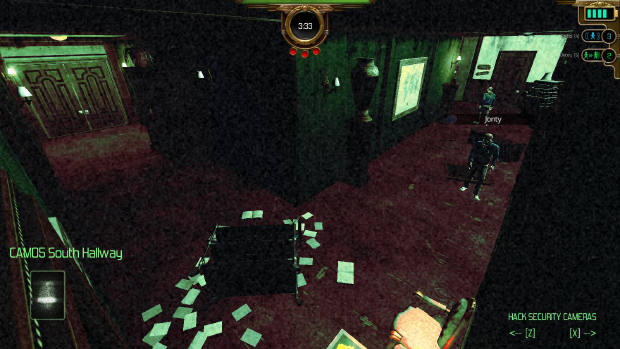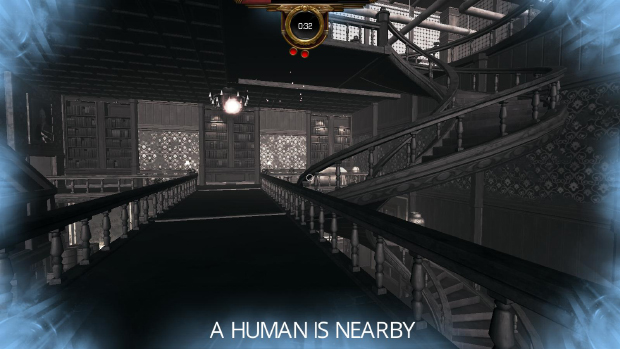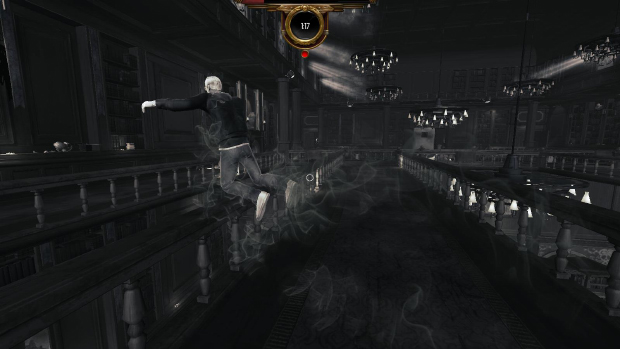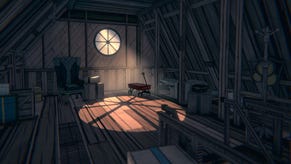Premature Evaluation: Dead Realm
Cadaver Laugh
Each week Marsh Davies haunts the halls of Early Access, scaring up any stories he can find and/or enduring the eternal torment of the damned. This week he’s been playing Dead Realm, a spooky multiplayer game of hide-and-seek made under direction from YouTubers.
Pretty much every culture on the planet has a form of hide-and-seek and has done for thousands of years - even the ancient Greeks played it with the rules barely changing in the millennia since - so it’s a bit odd that games have largely relegated this kind of play to the modding scene. And it’s all the more surprising given what a massive entertainment spectacle it has subsequently become, largely thanks to Garry’s Mod and no small number of YouTubers, whose raucous antics wrack up cumulative viewing figures in the many, many millions. Combine this ruleset with that other video-friendly favourite, the viral horror game, throw in a few reaction cams, and you have surely created as potent an expression of YouTube gaming’s raw essence as has ever been divined. This must be at least partly the intent behind Dead Realm, a hide-and-spook hybrid, in which one ghost hunts the remaining players in a mansion, turning each of those it catches to its side, and, hopefully, noisily loosening some bowels in the process.
The ghost - optionally manifesting as either a wolfman or a horrible baby-thing in a mask - begins the round incarcerated in a spectral cage while the remaining players scurry to various corners of the large and intricately connected map. Three maps exist at the moment - a vast library and adjoining attic space; a boiler-room complex containing a giant furnace; and a meat processing plant replete with swinging pig carcasses. Within each of these environments are all manner of secret passages and hidey-holes. Players can dive into vents, slip through a false wall, or, more audaciously perhaps, plunge their pursuer through a trapdoor with a well-timed flip of a switch. Several of the environments contain finicky platforming challenges that, if bested, can leave a player suspended on pipework that even the most supernatural of players will struggle to conquer before their quarry slips off elsewhere.
This might make the "seek" part of hide-and-seek an impossible task, but with a click of the right mouse button, the ghost can summon an overlay which marks the positions of humans as glowing points of light. These disappear when you get close, however - replaced with a directional heartbeat noise. It’s not quite as useful, but I suspect that’s the point: to prevent the hunt becoming entirely trivial. However, it has the odd side effect of incentivising the ghost to back away, wobbling around the minimum periphery of the visual detection mode to better locate their prey. It seems like odd behaviour for a ghost - though admittedly not much less ridiculous than, say, the entire career of Derek Acorah, so maybe we shouldn’t second guess exactly what animates the restless dead.
The ghost can’t occupy this vision mode permanently, however, because it drains a resource which also powers the ability to sprint, and you’ll need that to effectively close the distance with your fleeing prey. Humans are far from helpless in any case: they too have an alternative vision mode, though it doesn’t locate the ghost directly. Instead, it brings up a tiny screen - presumably running a paranormally sensitive mobile app - which begins to fill with static interference in the shape of a demonic face as the ghost approaches. While using this mode, the player can also view security camera feeds (hat-tip to Five Nights at Freddy’s) which might catch the apparition as it passes.
Even as the malevolent spirit bears down upon them, humans have means of escape: depositing some sort of psychic bubble which blocks the ghost’s movement, or spawning decoy clones to distract it as the real human makes an escape. I’m not entirely certain that these abilities, combined with the structure of the environments, make for a balanced match. It’s easy for human players to frustrate the ghost by clambering to some hard-to-reach place and bumping it off with psychic bubbles as it attempts to pursue, forcing the ghost to make the climb again.
This is specifically interesting to me because such a situation arises in a video made by one of the YouTubers involved in the game’s creation - and, despite the mild protestations of the ghost player, he seems unconcerned. And I’m not saying he should be: it makes good telly. You see, I feel the best Let’s Plays are ones in which the stars make some part of the fun for themselves, which raises a question about whether the function of this game demands balance, or whether it’s the players/performers who are beholden to resist repeatedly exploiting the freedom of the game for tedious competitive advantage. The end goal of Dead Realm may not be to win but to have a good time - and for your audience to have a good time, too. A strategy that might be deemed unfair in a game with leaderboards and tautly wound mechanics is here just a good laugh. Though, perhaps, just the once.
So far I’ve been describing just one of the game’s two modes: no one seemed to be playing the other one, and, even when they stumbled on to my server, didn’t demonstrate they understood how. In this mode, humans are required to find ten pocket watches, which will open a portal and allow them to escape. The ghost’s ambitions remain the same - but he or she is no longer visible to other players. I like the notion of forcing the humans out of hiding, preventing them from just indefinitely exploiting the game’s geometry to become more or less unassailable. But it risks making things too hard for them, instead. With the number of items they need to collect slightly reduced, and perhaps also by nerfing the ghost’s vision mode to give no exact positional information, this could become the most intensely competitive way to play the game.
Though, while that’s a game I’d enjoy playing, I’m again unsure that “intensely competitive” is necessarily what Dead Realm needs to be. These aren’t show-matches so much as socials, and it’s clear that the joy of the game may come largely from the company you keep. I was lucky enough to assemble a team of excellent chums as I bumbled my way through this review (thank you Craig Pearson, Jonty Hicks and Tom Francis). These three proved to be about as perfect companions as you could want for knockabout make-your-own-lols, exploring and enjoying the game’s possibilities and foibles both.
The game is successful, too, at setting up moments of shriek-inducing surprise: when the ghost successfully reaps your soul, the camera twists to thrust its face into your screen, accompanied by a suitably startling sting of music. It’s not much more subtle than someone popping a balloon in your ear, but it does the trick - even though the game is bloodless, and, in the main, largely devoid of any genuine rating-baiting terror.
This is either a cannily economic decision or just a really rather responsible one on the part of the developers, who must realise the age of their potential audience skews quite young. Indeed, it’d be easy to sniffily dismiss the hunt for the ultimate YouTube game as a cynical project designed to bilk an audience of adolescents for whom the boundaries between advocacy and advertising are no longer distinct, but I actually think - particularly on the evidence of Dead Realm - it can be as good a motive as any for creating a successful thing that people enjoy. I don’t see much wrong with that.
And, even if a couple of hours with the Early Access build is currently adequate to explore its offering, Dead Realm is in better shape than a lot of the games I see on there: it shows off an enjoyable core loop via a modest amount of content, and has a fairly clear schedule of additions, fixes and rebalancing ahead. If all the reaction-cam-friendly jump-scare games pitching up to stake a claim to the YouTube audience were made with such consideration, we’d have little to fear - except the ghosts themselves.
Dead Realm is available from Steam for £11. I played the version with the Build ID 723789 on 07/08/2015.
